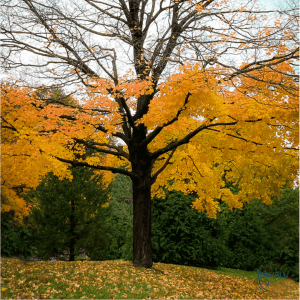
For many, the fall season marks a time of change and transition. Natural landscapes visually change their appearance, with the transformation of lush greens to yellow-red-brown colors in our foliage. And an even more pronounced and stark transformation is the falling of the leaves, saturating our grounds and pathways.
These natural changes that occur all around us find an echo in our emotional, spiritual and behavioral dispositions, signaling for us a shift in the way we relate to others, move and have our being. Emotionally, some may become ambivalent, resistant and may even be moved to deny the season of transformation. Yet, the opposite can also be true, as some use this transformative time as an opportunity for deeper examination and contemplation.
One area where this contemplative disposition becomes more evident is in our celebrations. Harvest festivals and Thanksgiving, for example, mark for us this time of transition, especially as we remember the harvest season and incorporate the bounty in our family dinners and home decors. The same holds true for our religious remembrances, as the Thanksgiving holiday becomes more than an occasion to commemorate historical events. Thanksgiving dinners provide spiritual moments to express our gratitude to one another and God.
In different ways, these cultural remembrances and religious commemorations confirm our readiness and ability to welcome real change and transformation. At the same time, they provide ritual and cyclical experiences that prepare us to embrace the deeper spiritual transformations that are part of our experience of life and death.
Perhaps more than any other human experience, the contemplation, remembrance and acceptance of death not only brings a profound sense of reflection, but also a desire to connect and reach out to one another in mutual support and consolation. In our Catholic spirituality, we pause during this fall season to deliberately reflect and commemorate what this experience of dying and rising means for us as followers of Christ.
Ritually, we set aside distinct days of remembrance that include commemorating our saints and departed souls. We take the time to acknowledge that in this life and in the next, we never stand or walk alone. The communion of saints and our remembrance of our deceased loved ones on All Souls Day bring needed consolation and sense of communion and connection. So, we take the time to set up special altars or sacred spaces to help us remember, and we intentionally inscribe the names of those we love in the Books of Remembrance often found in our spaces of worship and prayer.
We know from our faith, that our deepest desire to connect and remember is rooted first and foremost in the memory of Jesus. Close to our hearts are the words of Jesus reminding us that our Christian calling means embracing the Paschal Mystery or the dying and rising moments of our lives: “In all truth I tell you, unless a wheat of grain fall into the earth and dies, it remains only a single grain; but if it dies it yields a rich harvest” (John 12:24). Far from revealing any kind of morbid obsession with death, these words of Jesus open up for us our ultimate vocation to follow and be with Jesus Christ, both in this and in the next life to come (John 12: 26-28).
In this time of change, transformation and remembrance, let us particularly remember those who have fallen to the earth because of this painful COVID-19 pandemic, trusting that their lives and our memories of them will yield a rich harvest. And in faith, let us hold fast to the transformation and consolation that are ours in Christ: “Anyone who believes in me, even though that person dies, will live (John 11:25-26).
F. Javier Orozco
First published November 29, 2020 in the St. Louis Review
